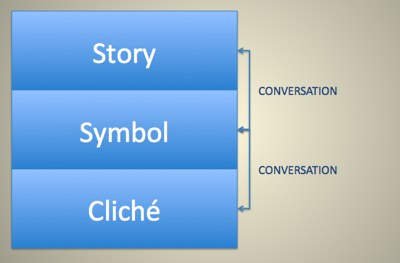Most of my commentary here is generally divided into two categories: sassy commentary and technology/marketing posts. This post, however, fits neither, so save yourself now if you came here to find those!
As I drove home from our weekly family gathering the other night, I gazed off into the ornamental decor and noticed this one beautiful grouping of three trees that were perfectly cone shaped. I am sure that you have seen these decorations. lights fill thin bands of plastic, so that when you erect the decoration it appears as a tree although it is nothing more than twenty feet of coiled plastic and lights.
In many ways, I believe this decoration is an excellent symbol for this season. We erect decorations that are apparently beautiful from a distance but are hollow and lifeless.
I started participating in Advent several years ago and since that time have found the season and celebration to fulfill a deep desire for the Holiday. Many of Doug’s excellent meditations have helped me to realize the significance to viewing the Holidays through the liturgical calendar.
The story is a magical celebration of light. In a dark world a child is born, and he becomes a light so bright that he changes all of human history. His birth indelibly marks our calendering system and brings a story that is the ultimate viral sensation. This one sneeze is still being shared through cultures encircling our globe. The story of love and grace and the ultimate sacrifice. As Doug so well articulates:
If we are not rescued, we will die in our grief, in our sinfulness, in our unforgiveness, in our suffering and sorrow. The only way out of the valley of the shadow of death is through death. So we look to the king who has conquered death. And now finally we may discover that Advent is both a season of the year and a season of our life.
As we reflect this light and share this story (or sneeze) we create conversations about the stories. Often we create symbols in these conversations for illustration and celebration. We have the Advent candle, which symbolizes the light in the darkness (the hope in exile). Sometimes we fill our homes and yards with symbols in celebration of the story: presents, candles, mangers, decorations.
More often we have conversations about the symbols. The story becomes a subtext (and even lost) in the conversation. We invent metanarratives like Frosty the Snowman and Rudolph the Red-nosed Reindeer to celebrate Christmas. These creations are not tied to the story but become second generation stories that are rooted in the symbols, which originally were conversations about the story.
As people struggle to get into the “Christmas Spirit” they are seemingly looking to the symbol to satisfy their needs instead of looking to the story. They are looking for the Christmas Spirit they knew when they were children that hoped for the impossible and fantastical Santa Claus who knew their hearts to deliver their retribution for good or bad deeds. As we grow older and lose hope in the story, we forget about the magical workings of the light of the world.
The symbol will always overpromise and underdeliver; it will disappoint; it is hollow and void of light. The story about the light of the world, however, will always underpromise and overdeliver. The Christ child was a spark in a land of exile. He brought a story about life in a lifeless world, and he provided meaning to a meaningless life.
As we celebrate Christmastide, think about celebrating life in the darkest, deadest season of the year. Happy Holidays!
